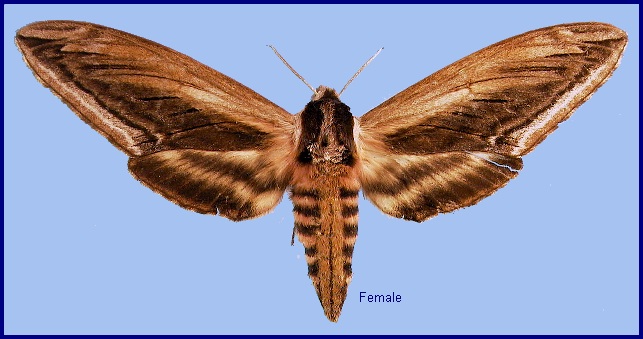
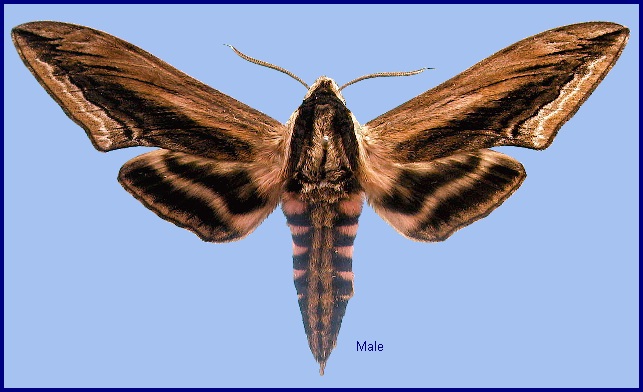
Sphinx constricta Butler, 1885, Cist. Ent. 3: 113. Type locality: Japan, [Honshu, Kanagawa,] Kashiwagi [Kashiwagaya].
[Further details on this species in Japan, as well as photos of many stages, can be found on Digital Moths of Japan as well as Moths of the southern Shikoku, Japan.]
Structurally similar to Sphinx ligustri, but forewings more elongate and angular; pattern similar, but the pink colour less intense. Hindwing upperside with antemedian and median pale bands connected at costal and inner margins, a situation rare in Sphinx ligustri; the bands much less pink.
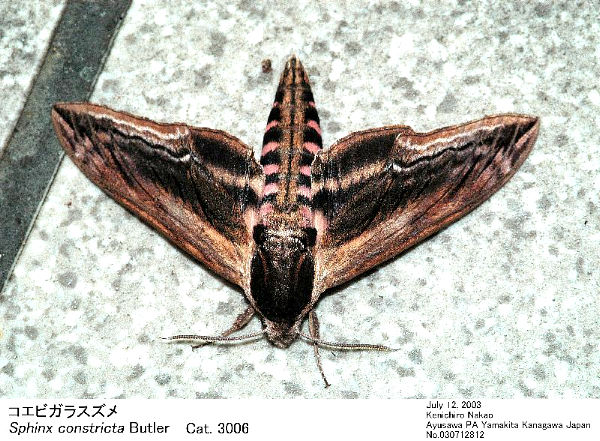
Japan: 28.iv-2.vi (Hokkaido); 6.vi-12.viii (Honshu); 20.vii-20.viii (Hokkaido); 27.vii (Shikoku).
OVUM: Not recorded.
LARVA: The anal horn in full-grown larvae of this species is totally black and granular. In Sphinx ligustri Linnaeus, 1758 it is yellow and black, more robust, and smooth.
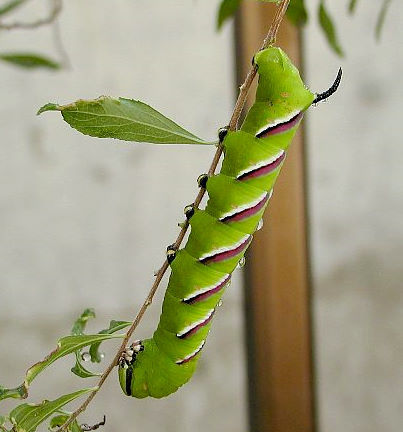
PUPA: Not recorded.
Larval hostplants. Abelia, Enkianthus perulatus, Helwingia japonica, Ilex crenata, Ilex macropoda, Rhododendron, Spiraea salicifolia, Spiraea thunbergii, Viburnum dilatatum and Weigela hortensis.
Tachinidae: Winthemia cruentata (Rondani, 1859).
Japan: Hokkaido (Hakodate; Oshamanbe (Kameda, 1990)); Honshu (Sado Island; Kashiwagaya; Shiratani-yama; Onoba; Fujimi Heights; Shimashima Valley; Bushi; Yamakita; Nagoya); Shikoku (Hidaka); Kyushu.
Endemic to Japan, south of southern Hokkaido (Komatsu & Inoko, 2000).
In central and northern Hokkaido, Japan, this species is replaced by Sphinx ligustri.
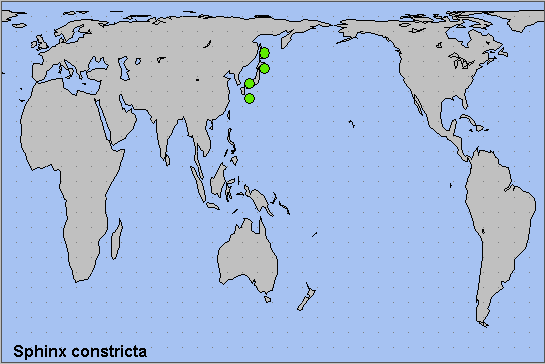
 Return to Sphingidae of the Eastern Palaearctic species list
Return to Sphingidae of the Eastern Palaearctic species list